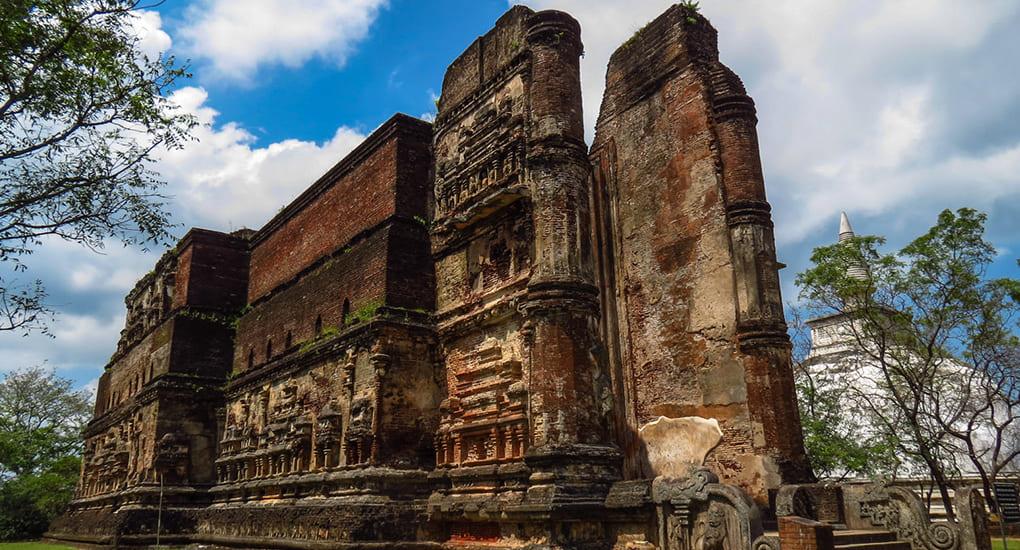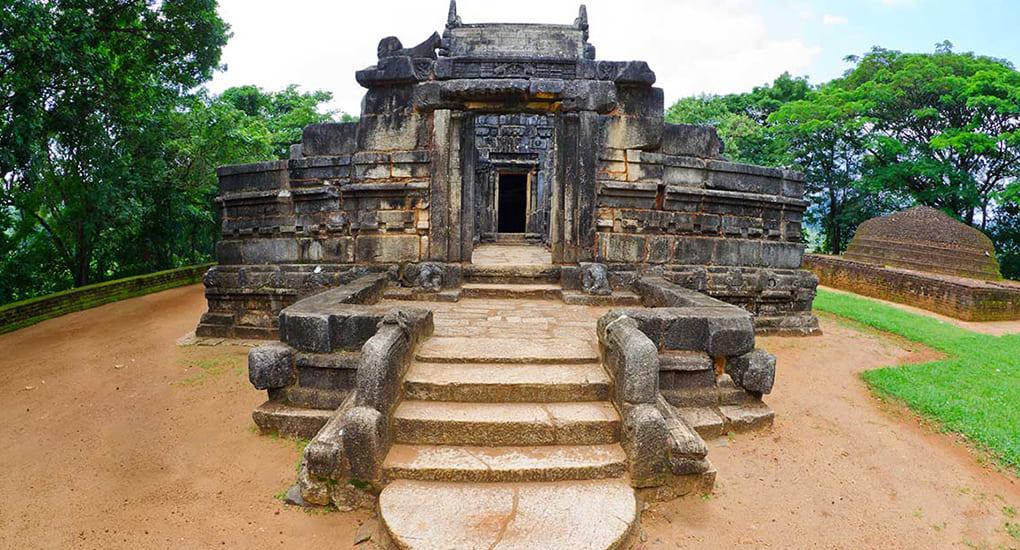Points of Interest - Polonnaruwa
Ancient City
About 800 years ago this was a city standing proudly with astounding architectures, gigantic stone carvings expressing serenity and peacefulness of religious statues and giant architectural wonders with intricate designs replicating and representing the grandeur to this day.
After the south Indian attacks, Anuradhapura was finally desolated and Polonnaruwa was chosen as the new capital by the South Indian Cholas in 10th Century. Eventually, the Chola dynasty was defeated and the power was regained by the Sinhalese king, Vijayabahu I in 1070.
For 2 centuries the city was enjoying the glory days, until in 13th century the capital was moved to the Colombo.
Parakrama Samudraya
King Parakramabahu, the ruler of Polonnaruwa at the time, built this colossal reservoir spreading over 2400 hectares, which filled-up number of minor tanks with a network of irrigation system. The tank originally consisted 5 large reservoirs naming Thopa wewa, Eramudu Wewa, Dumbuthulu Wewa, Kalahagala Wewa and Bhu Wewa in-order to reduce the pressure of the main dam.
Located in the dry zone, Polonnaruwa suffered from lack of water and the poor irrigation system with not enough to supply for the agricultural needs. King Parakramabahu took the initiative to collect every drop of monsoon rain water by creating over 53 tanks in order to enrich and amplify the rice production and agricultural industry all together, providing safe water and sanitation services to the community. Hence the name “wew Bendi Rata” (Country of Reservoirs) was used to describe Polonnaruwa.
Overview of sites that you can visit in Polonnaruwa:
Statue of King Parakramabahu
Bordering the Parakramabahu Lake is the statue, believed to be of King Parakramabahu, demonstrating the great architectural aptitude of ancient times. The 11ft 2in. height statue portrays a strong male figure, holding an Ola Leaves book (Pus Kola) in a grandeur manner. Next to the statue, sits the Pothgul Vehera (library) a small circular structure believed to have been either a library or a lecture theatre.
Palace of King Parakramabahu
This seven stories edifice was built in the 11th century by king Parakramabahu, believed to have comprising thousand chambers. A giant 30 feet tall, one meter thick wall, bottom half of the stair way leading to the upper floors, 55 rooms and three stories are the only ruins left of this once magnificent building. The archaeological excavations have discovered that the upper floors to this seven stories tall building was made with wood and enhanced with intricate wood carvings.
Gal Viharaya
This is one of the main tourist attractions in Polonnaruwa, featuring in thousands of post card designs of Sri Lanka.
Built by king Parakramabahu in 12th Century, Gal Viharaya consists of four Buddha statues carved into huge granite stone.
The four Buddha statues are of, Lord Buddha in the meditation pose on a lotus, 15 feet high statue depicting the Lord Buddha’s visit to the Thusitha heaven to preach his mother and guarded by two other statues of God, third is believed by some to be a seated statue of Ananda Thero, besides the fourth 80 feet long reclining statue of Parinirvana (passing-away) of Buddha. These are believed to have been painted with gold and studded with precious stones during king’s era and have been stolen by the treasure hunters.
Thuparama
This structure is a mix of Sri Lankan and South Indian architecture styles and patterns, which can still be seen on the well preserved semi-cylindrical roof and the remains of large seated Buddha statue even after 900 years after construction. Some believe this was built by King Parakramabahu and some think it was King Vijayabahu and yet to discover the creator of this architecture genius.
Nelum Pokuna (Lotus Pond)
Another one of famous monument in Polonnaruwa is the Lotus Pond, understood as a part of the Jetavana Monastery complex. It is built in the shape of a Lotus, hence the name Nelum Pokuna or Lotus Pond. Even though the pond is built close to the King Parakramabahu’s Palace, there is evidence to prove the pond was actually built by king Nissankamalla. These five concentric levels of eight petals pond is 254ft in diameter and completely built with cut granite.
Thivanka Image House
Located few hundred meters away from the Lotus Pond, Thivanka Image House is one of the largest brick buildings in Polonnaruwa, housed to a Buddha Statue, named Thivanka for its special feature of been bent in three places at the knees at the waist at the shoulders. Surrounding the statue are the two layered plastered wall featuring murals relating to Polonnaruwa era sightseeing.
Vatadage
Built by King Nishshankamalla (1187-1196), this ancient stupa, house a remarkable stone carved Buddha statues in the centre and on the four corners. The entrance of the Stupa is decorated with 2 beautiful stone carved guard stones and a moonstone unique to Polonnaruwa era. Resulting number of south Indian invasions, the bull, worshiped in Hinduism, was removed from the moonstones that were found in Polonnaruwa. And the band with four animals was completely removed and lion, elephant and horse were depicted in separate bands.
Hatadage and Atadage
Atadage, meaning house of eight relics believed to be the ancient relic chamber where the sacred tooth relic and seven more relics of Lord Buddha was kept. This was built by king Vijayabahu in 11th century and the Hatadage, meaning shrine of sixty relics was built right next to it was believed to be built by King Nissankamalla, following ruler to the House of Relic. However, some say due to the age of the building it must have been built by King Parakramabahu.
Lankatilaka
Built by King Parakramabahu this once gigantic structure has two 4m thick, 17m high walls and 14m high headless Buddha statue illustrating the architecture marvel of the era.
Kiri Vehera
The second biggest stupa in Polonnaruwa believed to have been built by the queen Subadra, wife of King Parakramabahu still standing 80ft high, in its original condition.
Nissanka Lata Mandapaya
Built by King Nissankamalla, the most important feature in this structure is the carvings of the stone pillars that are the shape of a lotus stork and are curved in three places.
Rankoth Vehera
4th largest stupa in Sri Lanka, Rankoth Vehera (the Golden Pinnacle Stupa) was built by King Nissankamalla (1187-1196). The stupa is 55m in height and 185 m in circumference, this is the largest stupa in Polonnaruwa.
Gal Potha (Stone Book)
This is 26ft 10in. tall and 4ft 7in wide Stone inscription found next to Sathmahal Prasada. Consists of 72 rows in 3 sections with more than 4200 12th century Sinhalease characters, describing the work of King Nissankamalla.


